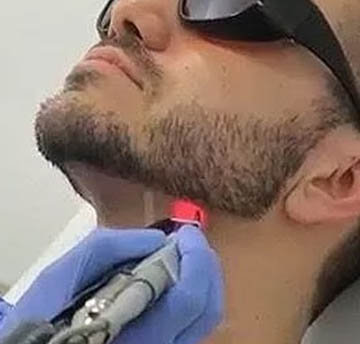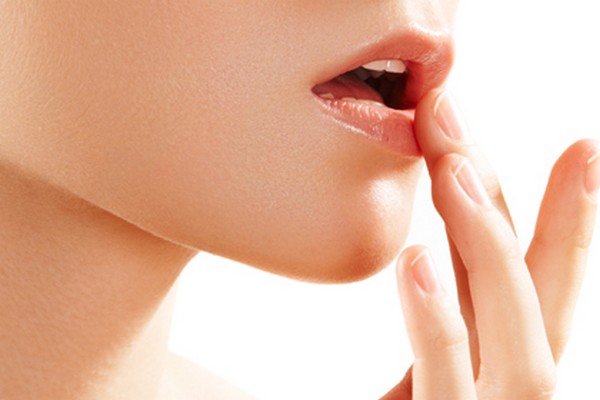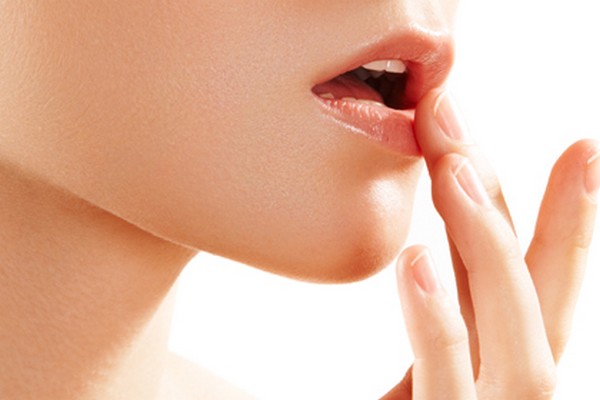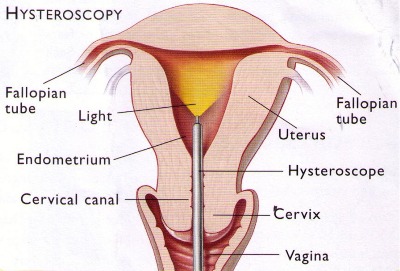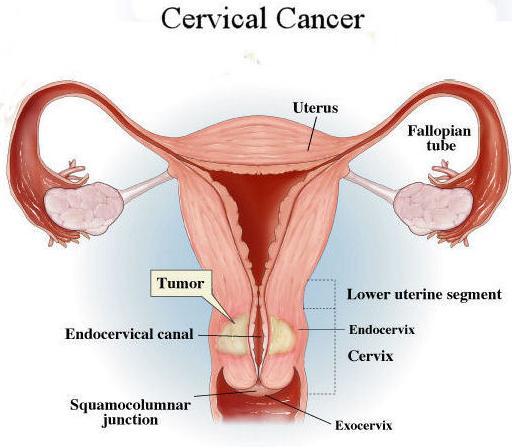MYTH: laser hair removal has not been safe.
FACT: It is absolutely safe to do the lasers with FDA Approved machines after consulting certified Dermatologists. It has to be done by skilled or trained laser technician.
MYTH: Laser hair removal exposes you to radiations and thereby can be a risk for causing cancer.
FACT: Lasers approved by FDA do not emit radiation ,thus no risk of radiation exposure and no risk of cancer at all.
MYTH: Laser causes burns.
FACT: While it”s rare and temporary,Burns from laser can occur particularly if you have dark skin though its rare and it’s absolutely correctable.
MYTH: Lasers are too much painful to endure.
FACT: Some people might feel discomfort ,while some can have pain,but with advanced cooling systems ,pain is not very much now a days.
MYTH: You can get discolored from laser hair removal treatment.
FACT: Lasers won’t change your skin colour.
MYTH: Laser can grow more hair after the treatment.
FACT: Laser can not grow the hair if it is done in a properly selected patient with optimal required laser parameters .
MYTH: You can get hair removed forever and completely.
FACT: After the required sessions of lasers,Hair will be very thin,sparse and will take very long time to grow again compared to earlier.So Maintenance sessions are needed every 4-5 month.
MYTH: Laser hair removal is done only for women.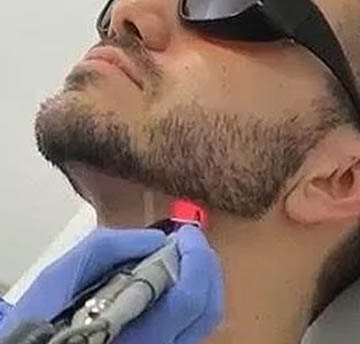
FACT: Laser is not only a female thing,can also be done for men.More and more men are opting for it now in Razor bumps,ingrown hair,beard shaping,chest,neck,back,arms etc.
MYTH: You cant get lasers done in Summer.
FACT: It can be done in summers also.Only Use of sunscreen is always mandatory post procedure.
MYTH: All lasers are equal.
FACT: While many lasers are available now a days in the market,but not all produce the same results.Our team at IMH uses BIOS FROM ITALY(Nd:yag ALEXANDRITE MIXED)technology to give the fast and the best results so far.
Tag: women
Mammography
What is mammography?
Mammography is pro-bably the most important tool doctors have to help them diagnose, evaluate, and follow women who’ve had breast cancer and also for screening women for breast cancer.
Safe and highly accurate, a mammogram is an X-ray photograph of the breast. The technique has been in use for about thirty years. It can detect most breast cancers at an early stage, before symptoms develop. Routine mammography is not available to women under 30 unless you have a first degree relative (mother or sister) who has had breast cancer at a young age.
Why is mammography important?
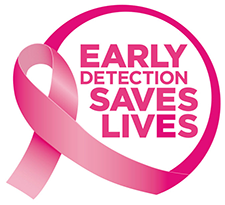 Mammography saves lives. About 1 in 12 women develop breast cancer at some stage in life, mostly over the age of 50. The earlier breast cancer is detected, the better the chance of a cure.
Mammography saves lives. About 1 in 12 women develop breast cancer at some stage in life, mostly over the age of 50. The earlier breast cancer is detected, the better the chance of a cure.
Finding breast cancers early with mammography has also meant that many more women being treated for breast cancer are able to keep their breasts. When caught early, localized cancers can be removed without resorting to breast removal. Research studies have shown that mammography screening has significantly reduced the number of deaths from breast cancer.
When to get a mammogram?
There’s a lot of confusion about when and how often to get a mammogram. For now, the recommendation is that women get a mammogram once a year, beginning at age 40. If you’re at high risk for breast cancer, with a strong family history of breast or ovarian cancer, or have had radiation treatment to the chest in the past, it’s recommended that you start having annual mammograms at a younger age (often beginning around age 30).
What if there is an abnormality?
Most women have a normal mammogram. Some women are asked to attend again if the X-ray picture is not clear, or to look more closely at a special area of the breast which needs a further detailed check. A small number are found to have early breast cancer and are offered referral to a surgeon for treatment. If any abnormality is detected, the patients would be advised to have an ultrasound of the breast with FNAC (A small needle would be put through the area of abnormality with or without ultrasound guidance, where cells would be taken from that site and sent for microscopic evaluation for cancer cells.)
Three important things to know about mammograms
1. They can save your life. Finding breast cancer early reduces your risk of dying from the disease by 25-30% or more. Women should begin having mammograms yearly at age 40, or earlier if they’re at high risk.
2. Don’t be afraid. It’s a fast procedure (about 5-10 minutes), and discomfort is minimal. The procedure is safe: there’s only a very tiny amount of radiation exposure from a mammogram. To relieve the anxiety of waiting for results, go to a centre that will give you results before you leave.
3. It is our most powerful breast cancer detection tool. However, mammograms can still miss 15-20% of breast cancers that are simply not visible using this technique. Other important tools-such as breast self-exam, clinical breast examination, ultrasound, and MRI can and should be used as complementary tools, but there are no substitutes or replacements for a mammogram.
Winter Lipcare
Having healthy lips in winter, maybe a dream come true for many. The skin on your lips is very thin and has no oil glands to prevent it from chapping. So it is completely your potential to keep them healthy. Even the most expensive lipstick will not cure the dryness of your lips. Protecting your lips from dryness is not just important for appearance, but also for health. You may end up with bacterial infections, cold sores and other problems if they are chappy. They will also effect your smile and damage your self esteem..
Causes For Chapped Lips:
There are different reasons for chapped lips, but here are a few that are extremely common:
1. Weather change – heat or cold
2. Aging plays a very important role in causing dry lips
3. Biting your lips will result in bleeding and cracked lips
4. Licking your lips is the worst habit!
5. Touching lips with fingers will transfer the bacteria on your hands to your lips and cause infections ( also aggravate chapped lips)
6. Dehydration
7. Usage of excessive chemicals (Lipsticks)
8. Any form of alcohol can provoke skin irritation
9. Any product with chemical preservatives
10. Leaving the lipstick on, while going to sleep
11. Using lip balms with alcohol, retinol and menthol
Women who like to chew on their lips wearing lipstick, will consume about 4 to 9 pounds of lipstick in their life time! All these may seem common but they affect your health, severely. They make the skin on the lips dry, rough and sensitive.
Protecting Your Lips:
For a long lasting moisture on the lips, you need to treat them from outside as well as from the inside. It is extremely important to consume plenty of water everyday. This will keep your lips moisturized from within, as it nourishes and protects the skin. If your diet has low levels of vitamin B, you are more prone to chapped lips. Including red meat, fortified cereals, skim milk, Swiss cheese, eggs and silken tofu to your diet will bring about a great change in your lips. The most important points to protect your lips are:
1. Quit smoking! It will completely spoil your lips and it may become too late to regain the color and texture of your lips.
2. Always keep your lips moisturized by applying a natural lip balm.
3. Apply lip balm before going to bed.
4. Licking your lips is a bad habit. Yes, it may look like it is keeping your skin moisturized for a moment, but it worsens the situation! The wind will dry your lips in a minute and you have to keep licking them. This process is unending and will become a major condition, by spreading away from the lips. So it is better to keep them moisturized with a lip balm.
5. For the winter season, you need to choose lip balms with extra moisturizing agents. The lip balms you choose should have a long lasting effect. They will keep your lips moisturized for a longer period of time. It is an added advantage if the lip balm contains SPF in it. The lip balms which contain the following are the best for your lips.
Shea Butter: Shea butter acts as a natural sun block and it has allantoin, which is a healing agent. This is the best ingredient to have in a lip balm. It gives a soothing effect to the lips.
Aloe Vera: As we all know, Aloe Vera consists of anti-inflammatory and anti-bacterial agents which protect the skin from any kind of infections. Aloe Vera is also very soothing and moisturizing, when applied on the lips.
Glycerin: Glycerin is a natural skin softer and it holds agents that bind moisture and skin together.
Jojoba Oil: It is one of the best nourishing oils for the skin. It softens and lubricates the skin, when it is applied.
Vitamin E: It is a powerful antioxidant and moisturizing agent. It protects the lips from the sun.
Coconut oil: Coconut oil relieves dry and itchy skin. It also softens and moisturizes the lips.
Beeswax: It is a non allergic skin softener, that moisturizes and nourishes the skin. It consists of anti-inflammatory and anti-bacterial agents that guard and protect the skin.
Vitamin A and D: These are pro-active vitamin complexes that are skin friendly. They contain fatty acids that are easily absorbed into the skin. They help to soothe and heal the skin effectively.
6. If you are in a habit of using lipstick everyday, choose the ones with moisturizing ingredients. It is better to avoid lipstick, especially in winter. Instead, you can use a moisturizing lip balm, with a tint of lip color.
Home Remedies To Treat Chapped Lips:
The golden secrets of gaining fresh, soft and luscious lips are by using home remedies. They are cheap, surely available and accessible at any time. If you use these secret tips, your lips will look moisturized and healthy, even without using lipsticks or lip balms. So try these simple remedies to cure your lips and enjoy an ever lasting moisture.
Honey:
Using honey to moisturize your lips is the best. You need to apply this in the night, before going to bed. It is the best way to clean your lips. It will also cure dark lips, caused due to sun exposure.
Ghee:
Ghee has the same effect on the lips as honey. You need to apply a few drops of ghee on your lips, before going to sleep. It will give you smooth and soft lips, within no time.
Green Tea Bags:
The oldest home remedy followed by many is green tea bags. Press one used green tea bag, against your lips for at least 4 minutes. You need to do this everyday to increase the moisture of your lips. This is the best natural remedy used to cure chapped lips.
Lemon Juice:
This remedy will help to prevent aging of the skin. It nourishes the sensitive skin on your lips, leaving them smoother and softer than before. Take a small bowl and mix one teaspoon of cream (milk) with 3 drops of lemon juice. Place the bowl in the fridge for an hour. Remove the mixture and apply it on and around the lips, before going to sleep. If you repeat this procedure for three days, you will notice best results. You can also continue it everyday to prevent the lips from aging.
Rose Water and Glycerin:
Rose water and glycerin is a great combination. It provides glowing and amazing skin, with regular use. You need to take a tablespoon of glycerin and rose water. The measurement may vary according to the need of each person. You need to take equal quantities of both the ingredients. Mix it together and apply this mixture to your lips, as well as your whole face, before going to sleep. You will see mind blowing results in 5 days time!
Glycerin and Honey:
Honey and glycerin will help to prevent wrinkles and dry skin. You need to take a teaspoon of honey and add very few drops of glycerin to it. Apply this mixture on the lips and leave it on for 15 minutes. Wash it off with normal water. Apply a few drops of glycerin again and leave it over night. This tip is extremely useful and prevents the lips from wrinkling.
Jojoba Oil:
This remedy gives a natural instant relief from severely chapped lips. All you need to do is take a few drops of jojoba oil and apply it on the affected area. You need to leave it on for about 15 minutes. Jojoba oil helps in a speedy recovery of your lips. It will get the moisture back into your lips, by nurturing the skin cells in the lips. It helps in building new skin cells which will repair the skin immediately.
Cucumber:
Cucumber is a vegetable with all the goodness in the world. You need to take a peeled cucumber and crush it. Extract the juice and apply this onto your lips. Leave it on for 20 minutes and wash off with normal water. You will see a major difference if you use this remedy regularly.
Sugar Scrub:
You can exfoliate your lips by using a good scrub. Even a small brush will do to remove the dead cells on your lips. But the best scrub for lips is sugar. It is easily accessible from your kitchen. You can take 1/2 teaspoon of sugar and add 2 drops of olive oil to it. Scrub your lips gently with this mixture. After 3 to 5 minutes of scrubbing, you can wash it off with normal water. Apply a good lip balm after wiping your lips with a cloth. This remedy will make you lips shiny and softer than before.
Hysteroscopy
What is hysteroscopy?
Hysteroscopy is a procedure that allows a doctor to look inside the uterus in order to diagnose and treat causes of abnormal bleeding. Hysteroscopy is done using a hysteroscope – a thin, lighted tube that is inserted into the vagina to examine the cervix and inside of the uterus.
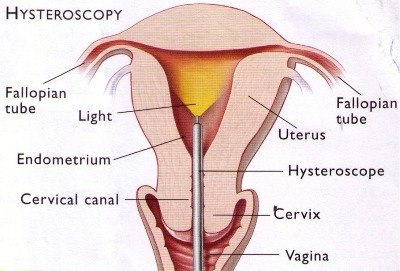
Why is hysteroscopy done?
One of the most common uses for hysteroscopy is to find the cause of abnormal uterine bleeding. Abnormal bleeding can mean that a woman’s menstrual periods are heavier or longer than usual or occur less often or more often than normal. Bleeding between menstrual periods also is abnormal. Hysteroscopy may be either diagnostic or operative.
What is diagnostic hysteroscopy?
Diagnostic hysteroscopy is used to diagnose problems of the uterus such as abnormal uterine bleeding, infertility, repeated miscarriages, adhesions, fibroids, polyps, or to locate displaced intrauterine devices (IUDs). It may also be used to confirm the results of other tests such as hysterosalpingography (HSG). Other instruments or techniques, such as dilation and curettage (D&C) and laparoscopy, are sometimes used in conjunction with the hysteroscopy.
What is operative hysteroscopy?
Operative hysteroscopy is used to correct an abnormal condition that has been detected during a diagnostic hysteroscopy, avoiding the need for a second surgery. During operative hysteroscopy, small instruments used to correct the condition are inserted through the hysteroscope.
When is operative hysteroscopy used?
Hysteroscopy may be performed to correct the following uterine conditions:
- Polyps and fibroids – Hysteroscopy is used to remove these non-cancerous growths found in the uterus.
- Adhesions – also known as Asherman’s Syndrome, uterine adhesions are bands of scar tissue that can form in the uterus and may lead to changes in menstrual flow as well as infertility. Hysteroscopy can help locate and remove the adhesions.
- Septums – Hysteroscopy can help determine whether you have a uterine septum, a malformation of the uterus that is present from birth.
- Infertility – tubal blockage at uterine end can be opened through hysteroscopy by cornual cannulation
- Abnormal bleeding – Hysteroscopy can help identify the cause of heavy or lengthy menstrual flow, as well as bleeding between periods.
- Postmenopausal bleeding – Hysteroscopy is also performed to determine the cause of unexplained bleeding or spotting in postmenopausal women
- Removal of foreign body or a missing IUCD
What are the benefits of hysteroscopy?
Compared with other, more invasive procedures, hysteroscopy may provide the following advantages:
- Shorter hospital stay
- Shorter recovery time
- Less pain medication needed after surgery
- Avoidance of hysterectomy
- Possible avoidance of “open” abdominal surgery
How safe is hysteroscopy?
Hysteroscopy is a relatively safe procedure. However, as with any type of surgery, complications are possible. With hysteroscopy, complications occur in less than 1 percent of cases and can include:
- Risks associated with anesthesia
- Infection
- Heavy bleeding
- Injury to the cervix, uterus, adjacent organs
- Intrauterine scarring
When should the procedure be performed?
It may be recommended to schedule the hysteroscopy for the first week after your menstrual period. This timing will provide the doctor with the best view of the inside of the uterus.
What type of anesthesia is used for hysteroscopy?
Anesthesia for hysteroscopy may be local, regional, or general:
How is hysteroscopy performed?
Prior to the procedure, one may be prescribed a medication to help you relax. You will then be prepared for anesthesia. The hysteroscope is inserted through vagina and cervix into the uterus. Saline is then inserted into the uterus, through the hysteroscope, to expand it and to clear away any blood or mucus. A light shone through the hysteroscope allows the doctor to see inside the uterus and the openings of the fallopian tubes into the uterine cavity. Finally, if surgery needs to be performed, small instruments are inserted into the uterus through the hysteroscope.
The time it takes to perform hysteroscopy can range from less than 5 minutes to more than an hour. The length of the procedure depends on whether it is diagnostic or operative and whether an additional procedure, such as laparoscopy, is planned at the same time.
How will I be prepared for hysteroscopy?
If you are having general anesthesia in the hospital, you will be told not to eat or drink anything for a certain period of time (usually after midnight the night before) before the procedure. Routine lab tests may be ordered as well for women having a hysteroscopy in the hospital. You will be asked to empty your bladder and your vaginal area will be cleansed with an antiseptic
What can I expect after the procedure?
If regional or general anesthesia is used during your procedure, you may have to be observed for several hours before going home. After the procedure, you may have some cramping or slight vaginal bleeding for one to two days. However, if you experience any of the following symptoms, be sure to contact your doctor:
- Fever
- Severe abdominal pain
- Heavy vaginal bleeding or discharge
Will I have to stay in the hospital overnight?
Hysteroscopy is considered minor surgery and usually does not require an overnight stay in the hospital. However, in certain circumstances, such as if your doctor is concerned about your reaction to anesthesia an overnight stay may be required.
Who is a candidate for this procedure?
Although there are many benefits associated with hysteroscopy, it may not be appropriate for some patients. A doctor who specializes in this procedure will consult with your primary care physician to determine whether it is appropriate for you.
Screening And Early Detection Of Cervical Cancer
What is cervical cancer?
It is the cancer of the entrance or mouth of the uterus(womb). It is a common cancer in women and if not detected early it can be fatal.
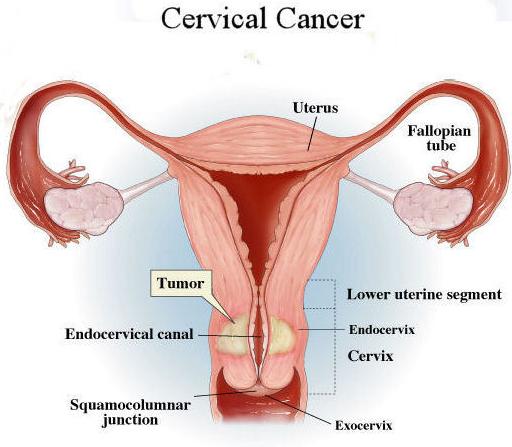
What causes cervical cancer?
It is caused by a virus called human papilloma virus(HPV) which is transmitted through sexual contact. There are many subtypes of the virus. It infects the cells of the cervix and causes abnormal changes in them,which if untreated and persistent can develop into cancer.
How can cervical cancer be prevented?
Cervical cancer can be prevented by regular screening with the PAP smear test which is done in the out patient clinic. In this test the cells on the surface of the cervix are scraped and sent for testing to identify any abnormal changes. Testing for cancer causing HPV virus can be done along with the PAP test. In this way the precancerous stage can be identified and treated to prevent the development of cancer.
Who should have PAP smear test and how frequently?
PAP test is recommended once every 3 years in all sexually active women aged 21-65 years.
If any result is abnormal then more frequent testing may be required.
After 30 yrs if HPV testing is done along with pap smear then 5 yearly testing is adequate.
If the pap smear is abnormal what is the next step?
In this case the gynecologist may recommend a further test called colposcopy and a biopsy may be taken if necessary. This is to confirm the presence of abnormality before any treatment is undertaken.
If precancerous changes are confirmed then a procedure known as LEEP/LLETZ(shaving off the abnormal area) may be advised.
If early cancer is detected it can be effectively treated and cured.
Is there any other method to prevent cervical cancer?
A vaccine against high risk subtypes of HPV is also available to prevent cervical cancer.it can be taken from 9-26 years of age. Ideally it should be taken before the first sexual contact but can give protection even if taken later.
Should women who have received HPV vaccine undergo PAP smear screening?
Vaccine does not protect against all the subtypes of HPV but only against the most high risk ones.So it does not prevent all cervical cancer.Hence women who have received the vaccine should still undergo regular screening though they are at much lower risk of developing cervical cancer.
